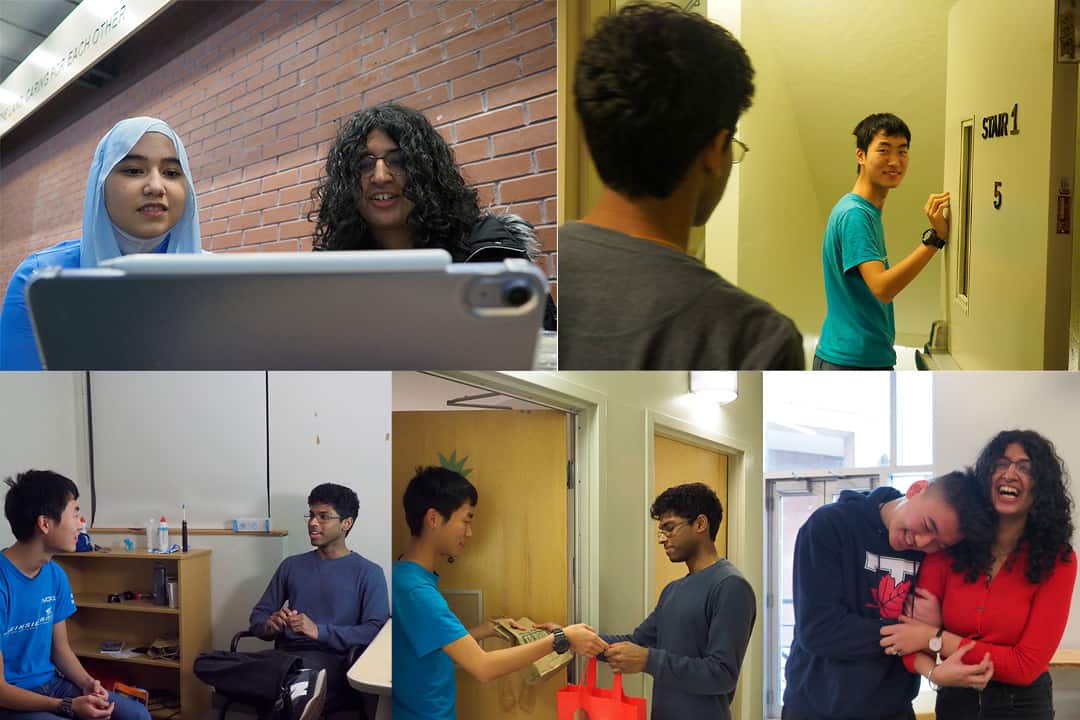Love is complicated. So when a book comes along that promises to simplify the way we express love and prescribes ways to improve our relationships, we jump to embrace it.
The love languages craze was started by a Baptist pastor, marriage counsellor, and anthropologist named Gary Chapman, who first published The 5 Love Languages: How to Express Heartfelt Commitment to Your Mate in 1992. Ten thousand podcast episodes and 500 million TikTok views later, love languages have become a ubiquitous part of pop culture.
The book’s premise is simple: every person has a primary love language — a way in which they prefer to receive love — and many relationship problems arise from clashing love languages between partners. But a 2024 article by relationship scientists Emily Impett, Haeyoung Gideon Park, and Amy Muise at U of T and York University suggests that these concepts are not scientifically accurate. Instead, they propose a new analogy: love is like a balanced diet where we need all nutrients to maintain a healthy relationship.
Does every person have a primary love language?
Despite the popularity of love languages, some researchers haven’t taken Chapman’s claims seriously for years. Relationship scientists have been conducting studies testing the validity of Chapman’s claims since 1992.
“Maybe… part of our job is figuring out what are the things that people are actually really interested [in] out there in the real world with their relationships [and] seeing if there’s any empirical evidence for them,” said Impett — a professor in the Department of Psychology at UTM and the director of the Relationships and Well-Being Laboratory — in an interview with The Varsity.
Reviewing 10 previous articles, Impett and colleagues debunked three claims made by Chapman, one by one. They first looked at the idea of having a single primary love language from a set list of possible languages — words of affirmation, quality time, receiving gifts, acts of service, or physical touch.
In The 5 Love Languages, Chapman mentions that each language can have various “dialects.” For example, words of affirmation can include a partner giving compliments or remaining kind in the face of conflict. However, he maintains that each person has only one primary love language.
This may be because the quiz Chapman proposes individuals take to find their love language forces them to pick between options such as holding hands and receiving compliments. In most relationships, we can have both. Denise Polk and Nichole Egbert at West Chester University in the US conducted a study where they didn’t pit various ways of expressing love against each other but assessed independently. In this study, most participants rated all of the love languages highly.
Another myth about the original love languages model is that there is a clear division of five distinct ways to express love. Research in 2011 by Laura Stafford at the University of Kentucky, for instance, found seven categories rather than five: positivity, understanding, assurances, self-disclosure, relationship talk, sharing tasks, and involvement.
Impett and colleagues explained that Chapman’s categories were born from a top-down approach. Chapman began with his own thoughts and theories and may have imposed those onto the couples he counselled. By contrast, Stafford’s seven-category model emerged from a bottom-up approach where study participants were first asked how they wanted to receive love. Researchers later drew connections from the results.
Chapman also claimed that for a relationship to be successful, partners must learn to “speak” one another’s love language. However, William J. Chopik and colleagues, in a 2023 study, “have looked at couples where partners have the same love language, [and asked], ‘Are they happier than couples where partners mismatched?’ And no, there’s no evidence for that,” said Impett in the interview.
The homogeneity of Chapman’s sample was another problem plaguing the love languages model. In his book, the examples of couples used by Chapman focus exclusively on mixed-gender and religious couples, perhaps skewing the patterns Chapman noticed.
Less about languages of love, more about its ingredients
After debunking Chapman’s claims, “we thought it would be equally important to provide an alternative, easily digestible message that avoids suggesting people can be fit into arbitrary boxes or there is a quick and simple fix for relationships,” wrote Park, one of the co-authors of the study and a doctoral student at the Relationships and Well-Being Laboratory, in an email to The Varsity.
The new metaphor proposes that relationships should be treated as balanced diets where partners need to receive love in many ways to have a healthy relationship. At different points in time, one might need more of a certain expression of love, as a runner may need more carbohydrates. But overall, all nutrients are necessary for a healthy relationship.
In the final pages of his book, Chapman writes, “I have not written this book as an academic treatise to be stored in the libraries of colleges and universities.” Given these results, perhaps that’s for the best.



No comments to display.